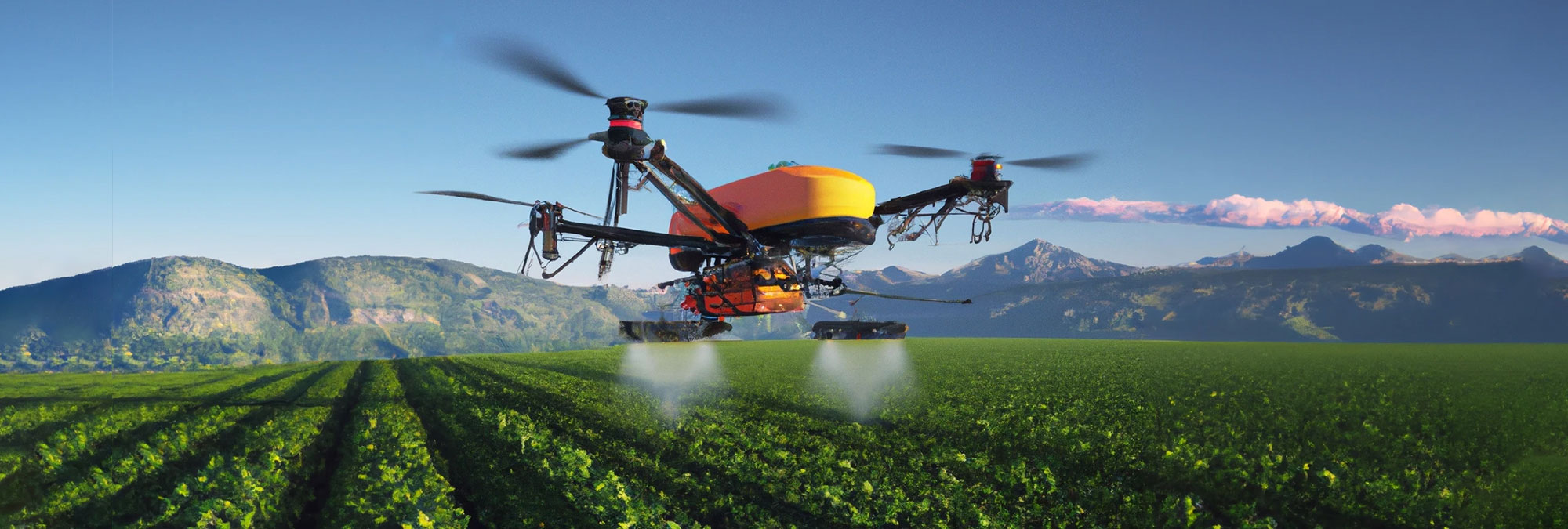In the diverse and challenging agricultural landscape of Australia, the embrace of advanced technology is more than a trend—it’s a fundamental shift towards optimising productivity and embracing sustainability.
Among the various innovations making waves in this sector, agricultural drones have emerged as a transformative force. These unmanned aerial vehicles (UAVs) are reshaping traditional farming practices, offering Australian farmers innovative ways to manage their crops and resources more effectively.
Introduction to Agricultural Drones
Agricultural drones, or unmanned aerial vehicles (UAVs), represent a significant leap in farm management technology. Equipped with high-resolution cameras, sophisticated sensors, and robust data analytics capabilities, these drones offer a bird’s-eye view that is invaluable for precision farming.
This aerial perspective enables farmers to assess, monitor, and manage their crops and resources with unprecedented accuracy and efficiency.
The Core Technology Behind Agricultural Drones
The functionality of agricultural drones is powered by a blend of technologies including GPS guidance, high-resolution cameras, infrared sensors, and sophisticated data processing software.
These technologies enable drones to navigate autonomously over diverse landscapes, capture critical data, and perform tasks such as planting, spraying, and mapping with precision. Understanding the integration and capabilities of these technologies is crucial for maximising the benefits of drones in farming.
Enhancing Crop Monitoring with Drones
Drones revolutionise crop monitoring by providing comprehensive visual data across entire fields. This capability allows for the early detection of irregularities such as pest infestations, nutrient deficiencies, and improper soil hydration.
Timely identification of these issues is key to maintaining crop health and can lead to more targeted and effective interventions, ensuring optimal crop development and yield.
Precision Agriculture Enhanced by Drone Technology
Precision agriculture leverages detailed data to apply the exact amount of water, fertilisers, and pesticides, precisely when and where they are needed. Drones play a pivotal role by collecting and relaying precise information, facilitating targeted action that conserves resources and maximises crop yields.
This not only boosts efficiency but also contributes to a more sustainable agricultural process by minimising waste and environmental impact.
Drone-Assisted Irrigation Management
In regions like Australia, where water scarcity can be a critical challenge, drones equipped with thermal and multispectral cameras can identify variations in soil moisture and crop health that indicate water stress.
This data enables farmers to optimise their irrigation systems to deliver water efficiently, directly to the areas most in need, reducing waste and enhancing crop health.
Targeted Pesticide Application
Drones offer a method for precise pesticide application, targeting only the areas that require treatment. This precision reduces the amount of chemicals used, lowering costs and minimising the impact on the surrounding environment.
Furthermore, drone applications can be carried out at optimal times, such as low wind conditions, which increases the effectiveness of treatments and safety.
Accurate Yield Estimation and Forecasting
With the high-resolution data provided by drones, farmers can predict crop yields with greater accuracy. This information is crucial for planning the harvest, optimising market timing, and preparing storage resources.
Better yield forecasts also assist in managing supply chain logistics and financial planning, enhancing the overall efficiency of the agricultural business.
Integrating Drone Data into Farm Management Systems
The integration of drone-collected data with farm management software allows for sophisticated analysis and better-informed decision-making.
This synergy between data collection and analysis helps in creating detailed farm reports, predicting future trends, and refining farming strategies based on historical data and predictive analytics.
Navigating Regulatory and Safety Issues
Understanding and adhering to the regulatory frameworks governing drone use in agriculture is crucial for lawful and safe operations. In Australia, the Civil Aviation Safety Authority (CASA) provides guidelines that address safety concerns, privacy issues, and other operational protocols.
Compliance with these regulations ensures that drone operations enhance farm productivity without compromising safety or privacy.
Future Directions and Innovations in Agricultural Drones
The future of agricultural drones is bright, with ongoing advancements in technology expected to introduce even more capabilities. Innovations such as autonomous drones, which can operate independently of human controllers, and artificial intelligence (AI) enhanced imaging techniques, promise to make drones more effective and accessible.
These advancements are poised to further revolutionise agricultural practices, making drone technology an integral part of farming.
Final Thoughts
Agricultural drones are set to become a cornerstone of modern farming in Australia, offering a range of benefits from increased efficiency to enhanced sustainability. As the technology evolves, it presents an exciting opportunity for farmers to improve productivity and environmental stewardship.
Transform Your Agricultural Operations
Ready to transform your agricultural operations with the latest drone technology? With our expert guidance and advanced technology, you can achieve higher yields, improve efficiency, and pave the way for a more sustainable agricultural future. Embrace the innovations today and let Precision Ag help you soar to new heights.
Precision Ag Services is a local family run business based within the Lockyer Valley and serves South East Queensland and beyond. Depending on what is needed Precision Ag Services is here to help you.
Please fill out our enquiry form for more information or to make a booking.


